8-minute read
keywords: history of science, marine biology, oceanography
The 1872–1876 expedition of HMS Challenger invented the science of oceanography. I previously discussed this remarkable voyage in my review of Doug Macdougall’s Endless Novelties of Extraordinary Interest. Since that book nourished but did not yet sate my curiosity, I vowed to read Full Fathom 5000, a promise I am making good on here. Focusing on the wondrous animals the expedition brought up from the deep, this engagingly written book provides a welcome additional angle.

Full Fathom 5000: The Expedition of HMS Challenger and the Strange Animals It Found in the Deep Sea, written by Graham Bell, published by Oxford University Press in July 2022 (hardback, 360 pages)
Biologist Graham Bell is based at McGill University in Montreal, Canada, where he teaches, amongst others, a zoology course. Since so many of the main groups of animals live in the sea, preparing for this course meant reading marine biology literature and thus encountering the unavoidable references to the Challenger expedition. Before long, he found himself making notes about the animals discovered, tracing the voyage on a map, and scrutinizing species lists until, rather amusingly I think, “it became easier to write the book than not” (p. 2). Most literature on the expedition focuses on the shore visits in exotic places. Bell instead largely omits these and puts the animals centre stage. The result is a nicely paced and balanced book that goes through the trip chronologically, discussing notable animal discoveries. He also gives surprising insights into the trip, adds relevant digressions about what we have learned since, and presents it all with the occasional well-placed dash of humour.
In the 1800s, we had no good idea about the deep sea and whether anything lived there. A key figure and spiritual forefather to the Challenger expedition was Edward Forbes. As he experimented with dredges, he soon noticed a vertical zonation to the organisms he retrieved and, plotting animal abundance against depth, postulated that no animals lived below ~300 fathoms (~550 m), which became known as the azoic hypothesis. Powell points out in Mysteries of the Deep that there was mounting evidence to the contrary that was ignored, while Bell here writes such reports were anecdotal and poorly documented. Regardless, there arose the idea of a systematic survey. Though Forbes would not live to see it, these plans were ultimately given logistical and financial backing by both the Royal Society and the Admiralty who commanded the Royal Navy.
After a brief first part that introduces these and other aspects (the committees involved, the ship, the crew, and the scientists), the bulk of the book takes you through the different legs of the cruise in 14 chapters. A menagerie of previously unknown animals was hauled up from the deep over the next 3½ years. Gorgonians (deep-water corals) whose polyps can live in such entangled colonies that “our unremarkable, unchallenged notion of the individual loses meaning” (p. 52). Barnacles that take sexual dimorphism to its logical extreme, with males little more than swimming testes that turn into an accessory reproductive organ after attaching themselves to females. Tripod fish that stand above the sediment on greatly elongated fins. Pond skaters that are rare examples of marine insects living on the sea surface. Holothurians (sea cucumbers) that showed up everywhere, indicating that deep-sea biogeography is very different from that on land. Polychaete worms that live inside sponges, their branching body all anus and one head. There lived animals in the deep alright.
“A menagerie of previously unknown animals was hauled up from the deep over the next 3½ years. […] There lived animals in the deep alright.”
These entries alternate with scenes from life on board. Several of the scientists and officers kept journals and afterwards wrote travel narratives on which Bell draws. Next to the successes, it also shows the boredom that set in as the expedition was a rather dull, rinse-and-repeat affair of taking depth soundings, measuring underwater temperature, and sampling the fauna with dredges and trawls at 348 locations (so-called stations) around the globe. By the time they reached the Central Pacific, some 2½ years into the trip, the naturalists were ready to go home, and journal entries sometimes passed over whole legs of the trip. I now better understand why Macdougall omitted the remainder of the expedition from Endless Novelties of Extraordinary Interest. The ~200 crew members were virtually all illiterate, with the exception (as far as we know) of assistant steward Joseph Matkin. A trove of letters home was discovered in 1980 and published in an annotated book. Bell gratefully mines that unique source for the proverbial “unauthorized version of the voyage” (p. 37). Thanks to Matkin’s letters, we know that the crew were in the dark as to their mission, other than what they had heard through the grapevine, something lead naturalist Charles Wyville Thomson tried to remedy through a lecture. Matkin also has an interesting explanation for why desertion rates remained high throughout the expedition: whenever passing navy vessels were implored to spare some men, they offloaded their most troublesome sailors.
There is a social justice streak running through this book, with Bell pointing out issues so evident in hindsight. There was extreme income inequality between the upper echelons and the crew, making this “not exclusively a modern phenomenon” (p. 43). Workplace accidents that would grind an operation to a halt today were an accepted fact of life. Probably the most tragic incident shows the impact of social class. When two people were urgently called to meet HMS Challenger at the island of St. Vincent to replace lost crew members, they arrived on the same boat, both short of money. But whereas the new schoolmaster was denied help by the British Consul, went looking for food, got lost, and died, likely of heat and thirst; the new sublieutenant was provided with board and lodging: “he was, after all, an officer and a gentleman” (p. 117).
Bell furthermore offers interesting asides on science history. One example is the infamous Bathybius haeckeli episode. One of Challenger’s goals was to confirm the existence of a primordial goo, a purported missing link between living and non-living matter that Thomas Huxley had noticed in bottled samples of deep-sea sediment. Try as they might, the Challenger scientists could not find it, until the onboard chemist John Young Buchanan discovered it was instead an inorganic precipitate that formed when seawater reacted with the preservatives used. Another example is how the aforementioned azoic hypothesis was revised repeatedly. Though the original formulation had been decisively disproven, could there still be a much greater depth below which life could not exist? When they accidentally found one of Earth’s deepest marine trenches, now called the Challenger Deep, they inexplicably deployed neither dredge nor trawl to check. Or could life perhaps survive both near the surface and at the bottom, but not in between? Just as important as what the scientists caught, is what they missed. Their equipment was rudimentary, unable to sample both very small organisms and the gelatinous creatures we now know occur throughout the water column.
“Though the Challenger expedition could have ended up as yet another forgotten Victorian oddity, it instead became legendary.”
Given that Bell authored the textbook The Evolution of Life, I should not have been surprised that he makes nicely formulated, thought-provoking observations on evolution. He mentions its tendency to modify existing structures rather than innovate completely novel ones. He flips the script on our perception of gelatinous creatures. Given that the deep sea is the largest habitat on the planet, rather than asking what might be the advantages of this lifestyle, we should perhaps consider it “the default option for animals. [Only] in special circumstances, where waves or tides or currents or gravity make it necessary, a robust body will evolve” (p. 280). Then there is the difficult question of which features to use in taxonomic classification. The expedition dredged up both the worm-like Glandiceps and the colonial, tentacle-bearing Cephalodiscus. Despite looking nothing alike, later anatomical investigation showed they are both hemichordates. “When we are trying to work out the relationships among animals […] should we place more importance on obvious features that are plain to see, such as a wormlike body versus tentacles, or on the ground plan of the body, such as two compartments versus three?” (p. 289). And when judging the relatedness of two corals with similar stony skeletons but different tentacles, which character do you use? Henry Moseley, the Challenger scientist most interested in corals, united the two groups based on their skeletons, whereas today they have been separated based on their tentacles. Bell reminds you that both ancestry and convergent evolution can result in character resemblance between different groups, complicating the science of taxonomy.
The final three chapters briefly trace what happened to the ship, the people, and the collected animals. They offer a gentle goodbye for the reader, as the trip ended rather abruptly: the crew disbanded, the six scientists never met each other again, and the ship, as opposed to e.g. the further adventures of HMS Erebus, was mothballed and unceremoniously scrapped for copper in 1921. Though the Challenger expedition could have ended up as yet another forgotten Victorian oddity, it instead became legendary. Bell sees two reasons for this. First was John Murray who played a minor role while on board but afterwards became the driving force that saw the project through to completion in 15 years, ensuring specimens were distributed globally to relevant specialists, data was analysed, and results were written up. Second was the worldwide dissemination to institutes and libraries of the massive 50-volume Challenger Report, grudgingly financed by the Admiralty.
Bell has gone to great lengths, consulting both primary and secondary literature regarding the expedition, as well as modern research on many of the animal groups discussed. In following the expedition chronologically from beginning to end, it provided the full meal that Macdougall’s Endless Novelties of Extraordinary Interest did not quite give me. The two books nevertheless stand shoulder to shoulder, each providing its own interesting and worthwhile perspective on the Challenger expedition.
Disclosure: The publisher provided a review copy of this book. The opinion expressed here is my own, however.
Other recommended books mentioned in this review:
__________________________________________________________________
__________________________________________________________________

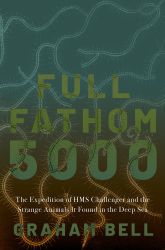
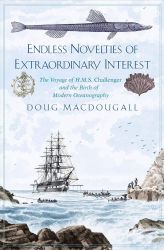
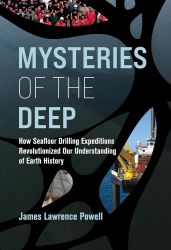
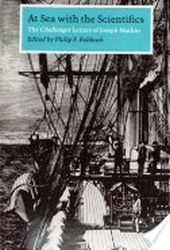

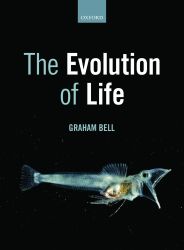
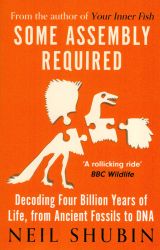
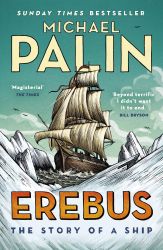
2 comments